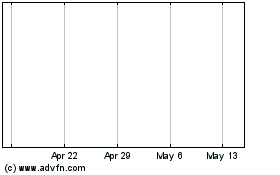By Liam Pleven
Like Hollywood stars fighting for top billing, the owners of two
Los Angeles shopping centers are undertaking expensive overhauls
that highlight the staggering cost of keeping retail property
chic.
Taubman Centers Inc. announced last week that it will spend $500
million to renovate Beverly Center. The firm, based in Bloomfield
Hills, Mich., is tearing up the roof to install skylights and
putting in restaurants at street level to lure pedestrians into
what is now a traditional enclosed mall.
Roughly three miles away, Westfield Corp. is remaking Century
City, which will feature the first West Coast outpost of star chef
Mario Batali's Eataly food emporium and which the Sydney-based firm
says will be "the landmark retail destination for the west side of
Los Angeles." The price tag: $800 million.
Both properties have desirable addresses near tony Beverly
Hills, and both are already considered among the most lucrative in
the nation in terms of sales. Each has a roster of retailers that
cater to well-heeled customers, including Bloomingdale's and
Tiffany & Co.
Yet there is also considerable pressure to maintain high-end
status.
"Malls are like the fashion business," said Alexander Goldfarb,
a senior analyst at Sandler O'Neill + Partners. "It's very
expensive to look good."
Many malls around the country are struggling, as consumer
interest in traditional department stores wanes and shoppers spend
more retail dollars online. Green Street Advisors, a real-estate
research firm, estimates that roughly 15% of the nation's 1,000 to
1,100 malls will close or be converted to another use over the next
10 years.
But owning so-called A malls is widely seen as a strong strategy
for thriving amid any potential shakeout in retail real estate.
Such prime properties are often owned by large firms such as
Taubman Centers and Westfield, and they often have strong positions
in affluent markets.
Their tenants also tend to make more money, which generally
translates into higher rent for the landlord.
Green Street says the average A++ mall--the rarefied category in
which the firm places both Beverly Center and Century
City--generates $965 a square foot in sales. The average B+ mall
generates $415, while the average C+ mall generates $305, according
to Green Street. By Green Street's count, there are just 37 A++
malls in the U.S.
Still, landlords often have to spend money to keep making money.
Simon Property Group, the nation's largest mall owner by market
capitalization, is spending about $1.5 billion on redevelopment and
expansion projects.
As of year-end, Simon Property said it was redeveloping or
expanding 29 properties in the U.S. and Europe, including some of
the most well-known malls in America, such as Roosevelt Field in
Garden City, N.Y.; King of Prussia, outside Philadelphia; and the
Galleria, in Houston. Work at Roosevelt Field is now largely done,
according to a company spokesman.
"We ripped up Roosevelt Field, we ripped up King of Prussia,"
Chief Executive David Simon said in a conference call with analysts
in January. "We're ripping Copley to shreds," he added, referring
to Copley Place in Boston, where Simon Property is putting in new
flooring, adding a new escalator and making other upgrades.
Upgrades can also be costly in terms of lost revenue.
Redevelopment projects dented the company's financial results for
2015, Mr. Simon told analysts at the time.
The main impact on the company is from lost rent when some of a
mall's retail space needs to be shut down to accommodate
construction, Richard Sokolov, the company's president, said in an
interview.
"We are pleased with the results of our investments," said Mr.
Sokolov. Simon Property has said that it expects mall
redevelopments to deliver a 7% return. That figure is due to
additional retail space, he said, though he added that improving a
property should also lead to higher future rents on existing
space.
There is no guarantee that a redeveloped property will be any
more popular than it was before, according to Suzanne Mulvee, a
director of research at CoStar Group Inc., a real-estate data
firm.
"Anytime you're redeveloping a center, you're risking your
existing cash flow," Ms. Mulvee said. "And the reason you're doing
that most often is because you have to."
Yet the payoff can be considerable. For the most productive
malls, said Mr. Goldfarb, the analyst, "You could boost sales
hundreds of dollars a [square] foot. That's real money."
Updating a mall is also "smart paranoia," said Jay Luchs, an
executive vice president at Newmark Grubb Knight Frank, a
real-estate services firm. "There's always the threat of
competition."
Peter Lowy, co-CEO of Westfield, said the firm has been planning
the renovation of Century City for a decade, including buying an
adjacent property to allow for the expansion. "Markets change.
Markets move," he said.
The redevelopment will create space for a new anchor store, as
well as additional parking, a key amenity in Los Angeles. When the
project is done, Century City will have 1.2 million square feet of
space, up from roughly 800,000, according to the firm.
Westfield owns 34 shopping centers in the U.S. and the U.K. It
also spends money to redevelop lower-profile properties, Mr. Lowy
said, "but not like this."
William Taubman, chief operating officer of Taubman Centers,
said the company's plans came in response to changes in the
neighborhood around Beverly Center.
"You need to stay fresh and dynamic," he said. If the property
wasn't renovated, he added, "Our competitive position would have
eroded."
As for the cost, Mr. Taubman said, "This is not a game for the
faint of heart."
Write to Liam Pleven at liam.pleven@wsj.com
(END) Dow Jones Newswires
March 15, 2016 12:56 ET (16:56 GMT)
Copyright (c) 2016 Dow Jones & Company, Inc.
Westfieldc Stapled (ASX:WFD)
Historical Stock Chart
From Apr 2024 to May 2024

Westfieldc Stapled (ASX:WFD)
Historical Stock Chart
From May 2023 to May 2024
